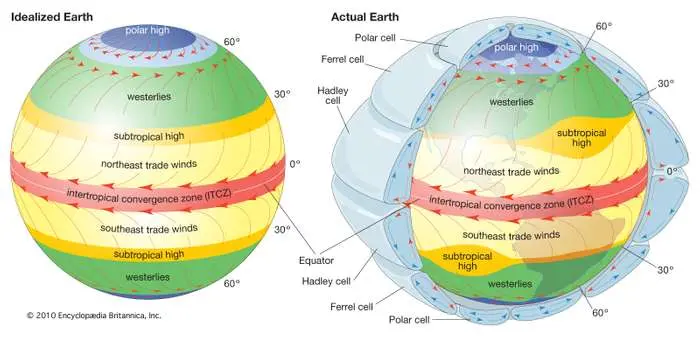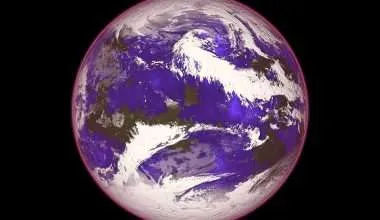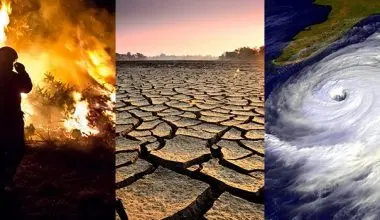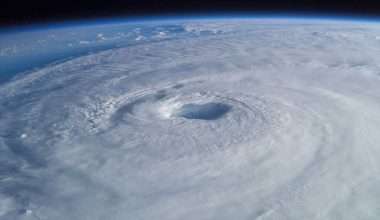Table of Contents Show
Flow and movement of nature are defining characteristics of Earth. The climate of Earth is dramatic and ever evolving. An example of this is previous ice ages which proved how fluid and adaptable climate can be. In current times human actions have the potential to change the dynamics of Earth’s living.
Life wouldn’t be the same without the influence of currents. One of the major determinants of weather and climatic changes are ocean currents. If we as humans try to alter them, the long-term impact of that would be devastating.
What factors affect global climate?
The Earth has many features; among them are thousands of microclimates. These microclimates are formed by multiple factors. These include temperatures, rainfall, winds, patterns, humidity levels, and others which affect the global climate of our planet.
The list of factors which influence global climate are as follows:
1. Latitude: Moving from the equator to the south or towards the north, leads to gradually cold temperatures, changed somewhat by Earth’s tilt on its axis.
2. Altitude: The temperatures predicted by the altitude on the mountains are much colder due to the loss of atmospheric pressure at higher altitudes.
3. Proximity to oceans: Oceans emit heat more steadily than land and they help in moderating the temperature in coastal areas and keeping it mild. The summers are cooler and winters are warmer.
4. Prevailing winds: Winds play a vital role as they blow across the Earth. Winds which blow over the land bring dry air and sometimes hot air if there is a desert nearby. Winds from Polar Regions can bring in summertime cooling or cold air in the winters. However, winds that blow around the ocean bring in rainfall and humid air.
5. Variation in the angle, intensity and duration of solar radiation: The variations in the hours of daylight and the seasons are due to the changing distance from the sun while revolving around it and the Earth’s tilt.
6. Gravitational influences of the sun and moon: The studies show that the gravitational pull of the sun and the moon are responsible for the tides which influence the climate.
7. Plant photosynthesis: Carbon Dioxide is the most abundant greenhouse gas available to us. Plants absorb carbon dioxide and make oxygen through the process known as photosynthesis. This means that CO2 emissions would increase and photosynthesis would be decreased due to desertification and deforestation. This has a huge impact on the global climate.
8. Concentration of greenhouse gases in the atmosphere: Many studies prove that global warming is damaging the ecosystem in various ways and we need to take strong measures to control the carbon emissions. According to a study in 2015, the concentration levels of carbon dioxide in our ecosystem surpassed 400 parts per million.
9. Atmospheric currents (Global air circulation): Atmospheric circulation is when a large scale movement of warm air is distributed on the surface of the Earth. The atmosphere includes three air circulation cells: the Hadley cell, the Ferrel cell and the Polar cell. They all act together to maintain the atmospheric motion of air on the earth.
- The Hadley cell is the circulation of air where the air heats up and rises at the equator.Then after rising 10 to 15 Kilometers, it moves towards the poles. After reaching the poles and cooling a bit, it turns and passes through the sub-tropics and eventually coming back to the equator. The Hadley cell is to explain winds at lower Latitudes (0-30°)
- The Ferrel cell operates reverse of the Hadley cell. It is to explain the movement of air at mid-latitudes (30°-60°).
- The third is the Polar cell. The polar cell is similar to the Hadley cell as it also has a similar reason behind its movement, which is basically temperature. At the 60th Parallel, the air rises and moves towards the poles, where it descends due to cool temperatures. The cool air moves towards the 60th parallel again to replace the air that rose before. This way a convection current of air is created.

Encyclopædia Britannica, Inc.
10. Ocean currents: Oceans cover around 70 percent of the Earth’s surface which makes them have major influence on the climate. Like Atmospheric currents, the ocean currents help to balance the temperature within the atmosphere. Cooler coastal climates are created as the tides take the cold water from the pole towards the equator whereas some currents and water movements take warm water away from the equator towards the poles influencing the climate over on polar coastal areas. The ocean currents or the movement of water play a major role in moderating the climate of your area along with many other factors discussed in the article.
How does water influence the climate?
The heat needed to drive the atmospheric circulation is made by the oceans as they absorb solar radiation. The development of the planet’s atmosphere is somewhat dependent upon the movements of the ocean. The ocean currents moving from south to north act as a conveyor belt which transport warm waters to the Polar Regions and carry cold waters back to the equator. This makes convection current just like with the air circulation.
Smaller currents are made by a unique pattern of movements. As a major current can move in all directions; the surface of the earth acts as a boundary to guide the current.
Ocean currents consist of two types. One is the deep water current and the other is the surface current.
The Surface currents of the ocean bring the cold water back to the equator whereas the Deep water currents carry warm water towards the poles. The difference in temperatures between the two currents is reduced by winds and rainfall. They originate over the ocean and influence the temperatures on the land by convection cycle of the wind as discussed above. This cycle of the water helps control the temperature all over the planet, especially keeping it mild in coastal areas.
Moving ahead, oceans also help the climate by absorbing carbon dioxide which is stored by sea vegetation, coral and algae. The carbon dioxide which is emitted by the consumption of the fossil fuels is absorbed by marine photosynthetic organisms; this indirectly reduces the global warming due to greenhouse gas emissions.
However, the absorption rate of carbon dioxide in the ocean reduces as the water gets warmer by climate change.
How are Ocean Currents Formed?
In simple words, ocean currents are formed by gravity, wind and by events such as earthquakes. The density of water in the ocean is influenced by differences in temperatures. However, if we look deeper into this, the ocean surface waves which are visible to us all are created by the earth’s rotation and the winds which blow on the water. As the water gets dense deep inside the ocean it forms deep water currents.
Northern and southern seas experience the deep water currents, and they carry large sums of cold water back to the equator. Many currents formed beneath the ocean vary due to the ocean’s geographical location.
How is heat transferred by the ocean currents?
Overall 25% of the planet’s heat is absorbed by the oceans. The current has two types; warm currents and cold currents. Warm currents flow away from the equator whereas cold currents flow towards the Equator.
Convective currents are created which are vertical and circular currents formed on the surface of the ocean. This happens usually when the surface water gets denser than deep water. The circular currents are created as the warm water is taken in by the equator and flows towards the pole where it cools down and shrinks.
If circular currents would not have been in existence, it would be too cold for the human habitation to survive. This would change the world drastically.
Thermohaline ocean circulation
The freshwater fluxes and the gradients created by the surface heat creates Thermohaline circulation that creates a large scale ocean circulation. The surface currents carry warm air towards the Polar Regions which makes the water so cold that it freezes. The water has salt dissolved in it so when it is frozen the water molecules are locked in the ice whereas the salt molecules are unaffected.
This water sinks as it gets dense. The surface current flowing behind the water makes it sink deeper which creates deep water currents that creates a loop which follows towards the equator.
The process of Thermohaline depends upon the density and the temperatures that cause the salty water to flow deeper.
Thermohaline circulation is a crucial element to keep the ocean-based heat balanced and if this process is hindered by global warming, it would create havoc for the whole planet.
Climate change, our uncertain future and the ocean currents
Climate change is impacting the Earth’s weather. As the planet gets warmer due to global warming and climate change, the temperature of the sea will also rise and that would cause higher sea levels, fiercer and frequent hurricanes, stronger winds and variation in the rainfall.
Heat waves might get common and there would be drastic change in the temperature in various parts of the world. The currents which flow within the oceans might slow down which have been observed by the scientists as the Northern hemisphere ocean current system known as Atlantic Meridional Overturning Circulation has slowed down which would eventually change the temperatures of European continent.
If strong actions are taken; these types of worst scenarios can be taken care of but if we fail to take strong actions in preventing global warming and climate change, it would lead to detrimental consequences. Our existence rely upon the ocean currents.






